solution Use Case
EVS Videoserver Management For Live Ingest
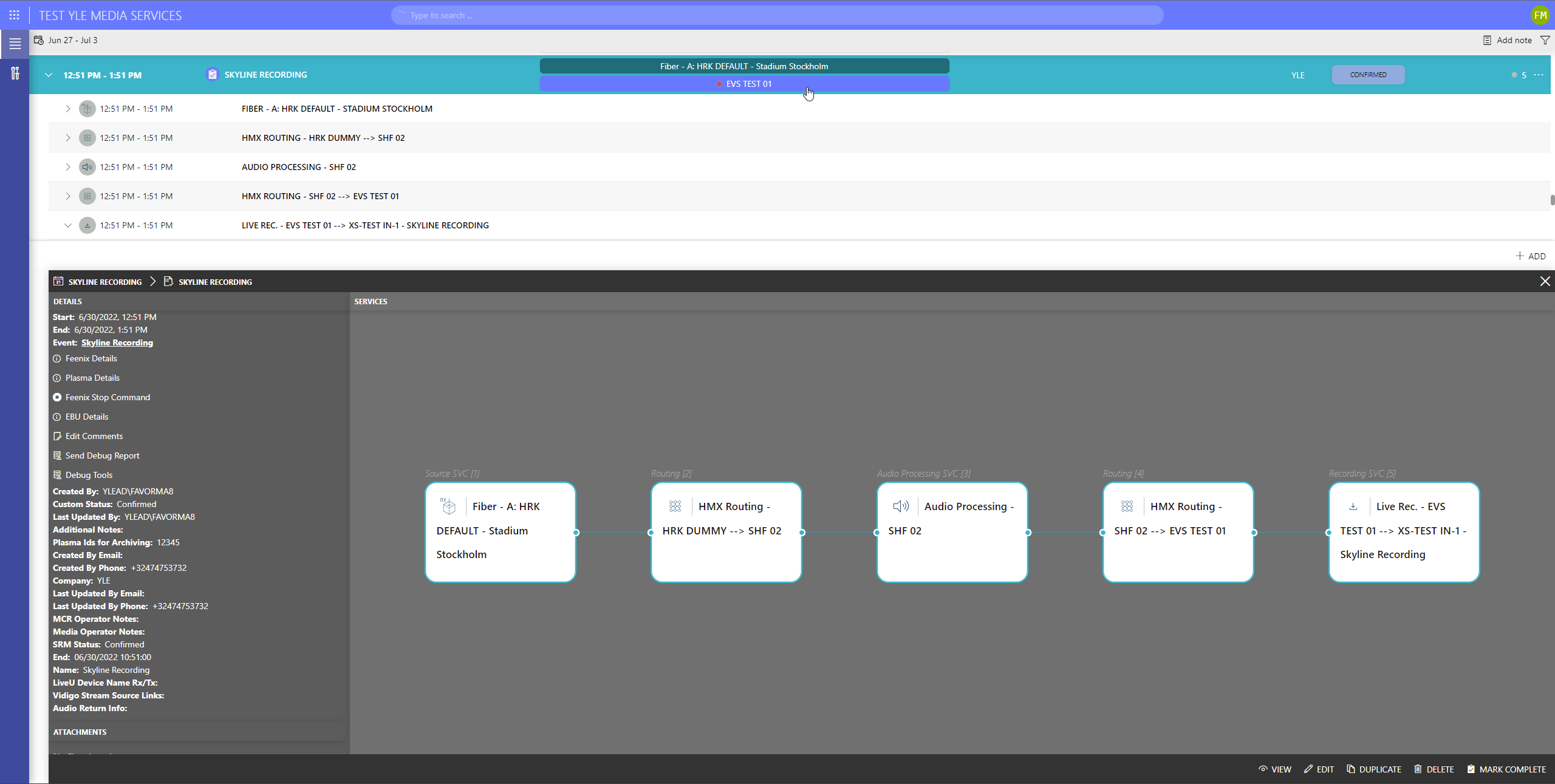
This example illustrates how DataMiner manages video servers for live ingest to automate all recordings. Managing live feed recordings does not stand on its own: the feeds that must be recorded need to be routed to the video servers first. This can include establishing a fiber contribution link, a satellite downlink, or an RIST SRT stream via 4G/5G, which needs to be made available in the MCR and then routed as SDI or IP signal to the video server encoders. Those incoming signals often also need to be processed to ensure that they they match the house standard.
In this example, triggering video server ingest channels from a pool of EVS server channels (via EVS IPD-VIA) is part of a media service order that automates all steps described above. We’ll take a look at how a new media services order is created, which includes recording the feed on video server channels that are available (e.g. not reserved by another work order, not in planned maintenance, not in alarm) and capable of doing the recording (e.g. HD encoders cannot be used for UHD signals).
DataMiner’s job is not done when the recording is finished. Take a look at DataMiner’s Media Asset Workflow Automation solution to explore how DataMiner automates media asset workflows, for example to send the recorded file to a QC engine and forward the file to a playout system when it has passed all QC tests.
USE CASE DETAILS
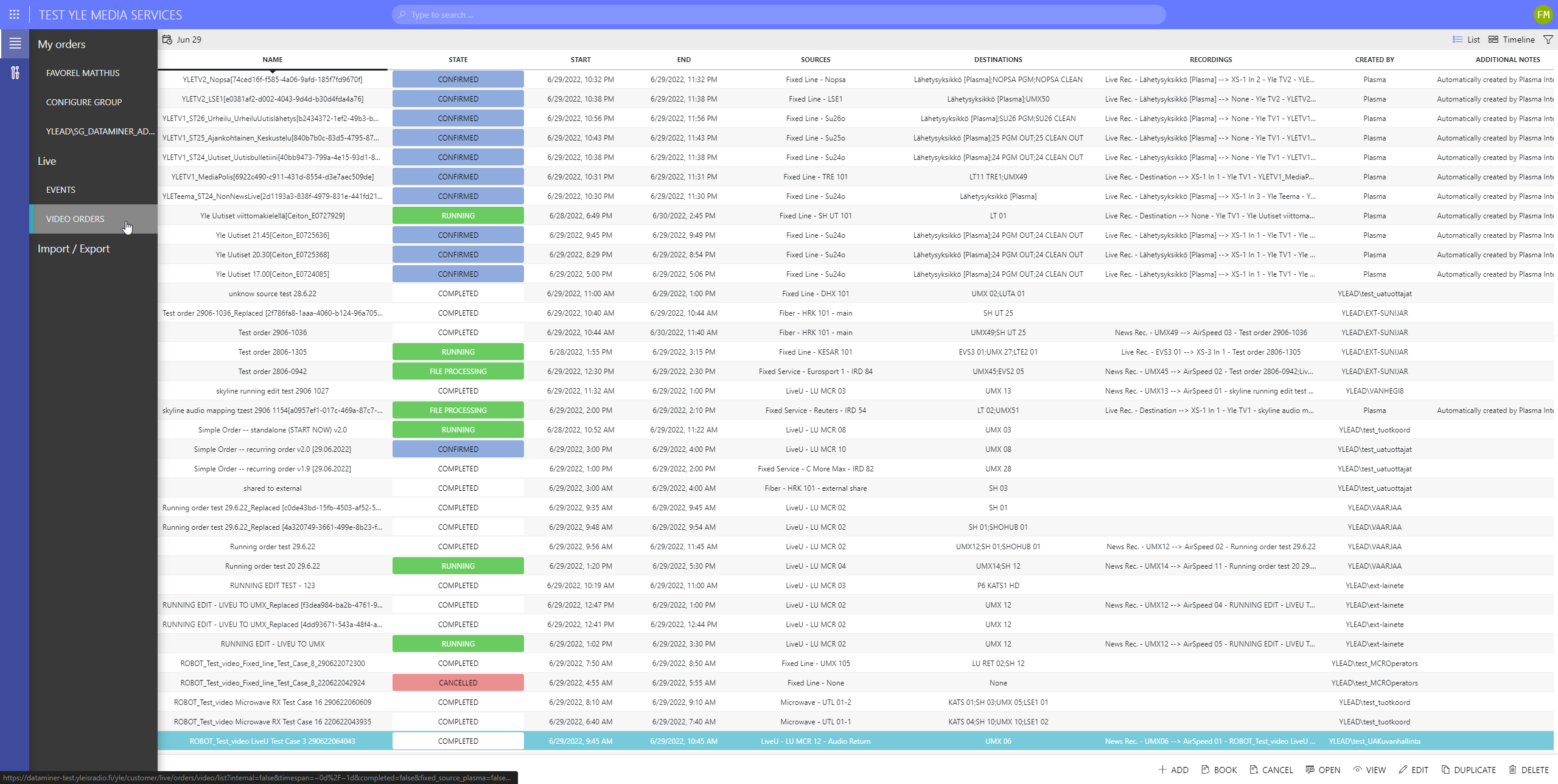 This screenshot shows the DataMiner "Media Services" app, which is used by a planning department to manage all incoming work orders. Work orders can be imported automatically from other planning tools or entered manually. To create a manual video order, click the "ADD" button and enter the necessary data in the wizard.
This screenshot shows the DataMiner "Media Services" app, which is used by a planning department to manage all incoming work orders. Work orders can be imported automatically from other planning tools or entered manually. To create a manual video order, click the "ADD" button and enter the necessary data in the wizard.
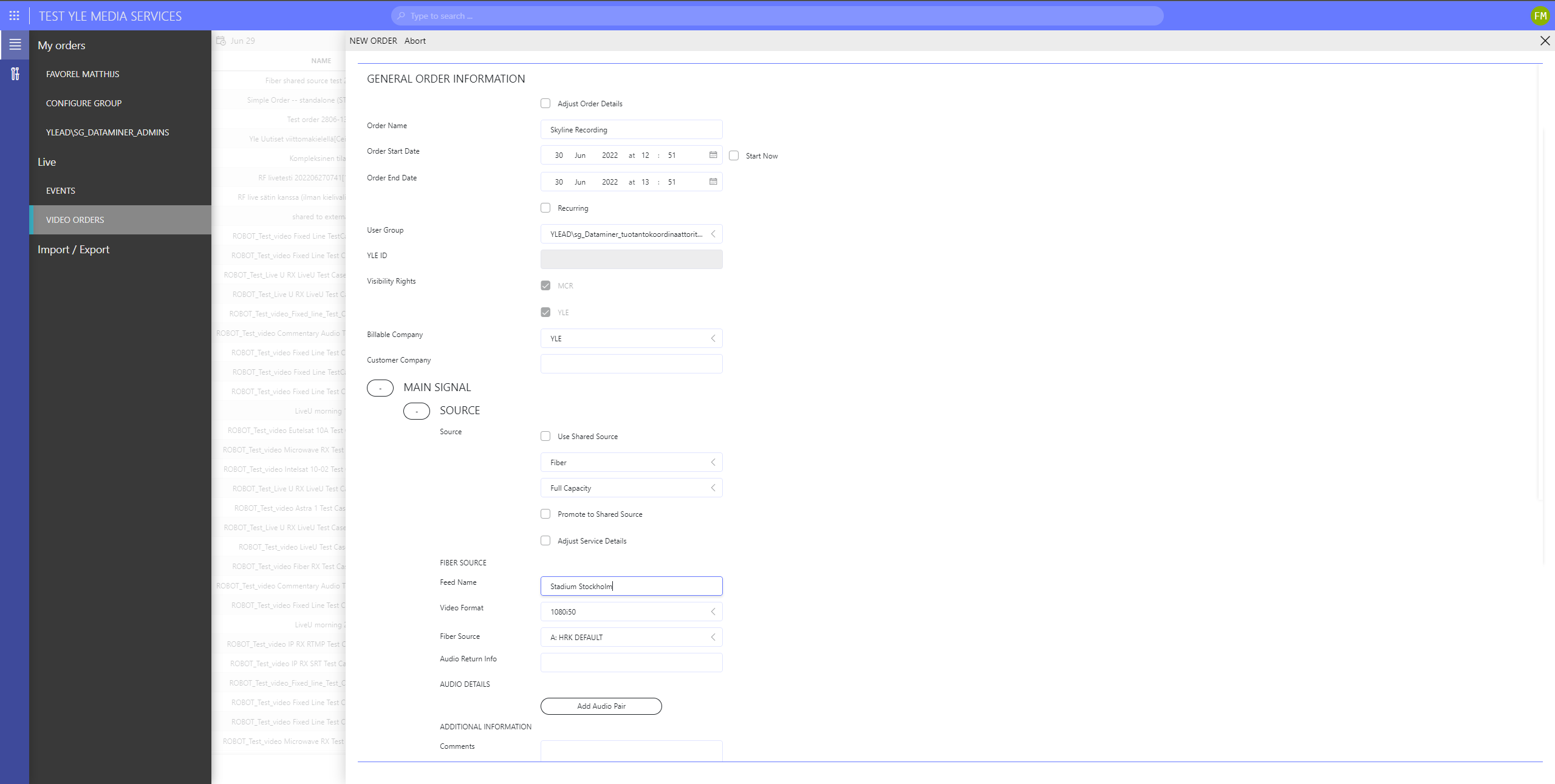 Operators in the planning department add all the required administrative data. This includes a valid name, the start and stop time, information about billing, the source and destination, and information about the recording(s). In the next step, the operators select a source. In this example, that's a fiber link from a stadium. Different sets of data can be needed depending on the customer. Some fields must be filled in to be able to proceed, while others are optional.
Operators in the planning department add all the required administrative data. This includes a valid name, the start and stop time, information about billing, the source and destination, and information about the recording(s). In the next step, the operators select a source. In this example, that's a fiber link from a stadium. Different sets of data can be needed depending on the customer. Some fields must be filled in to be able to proceed, while others are optional.
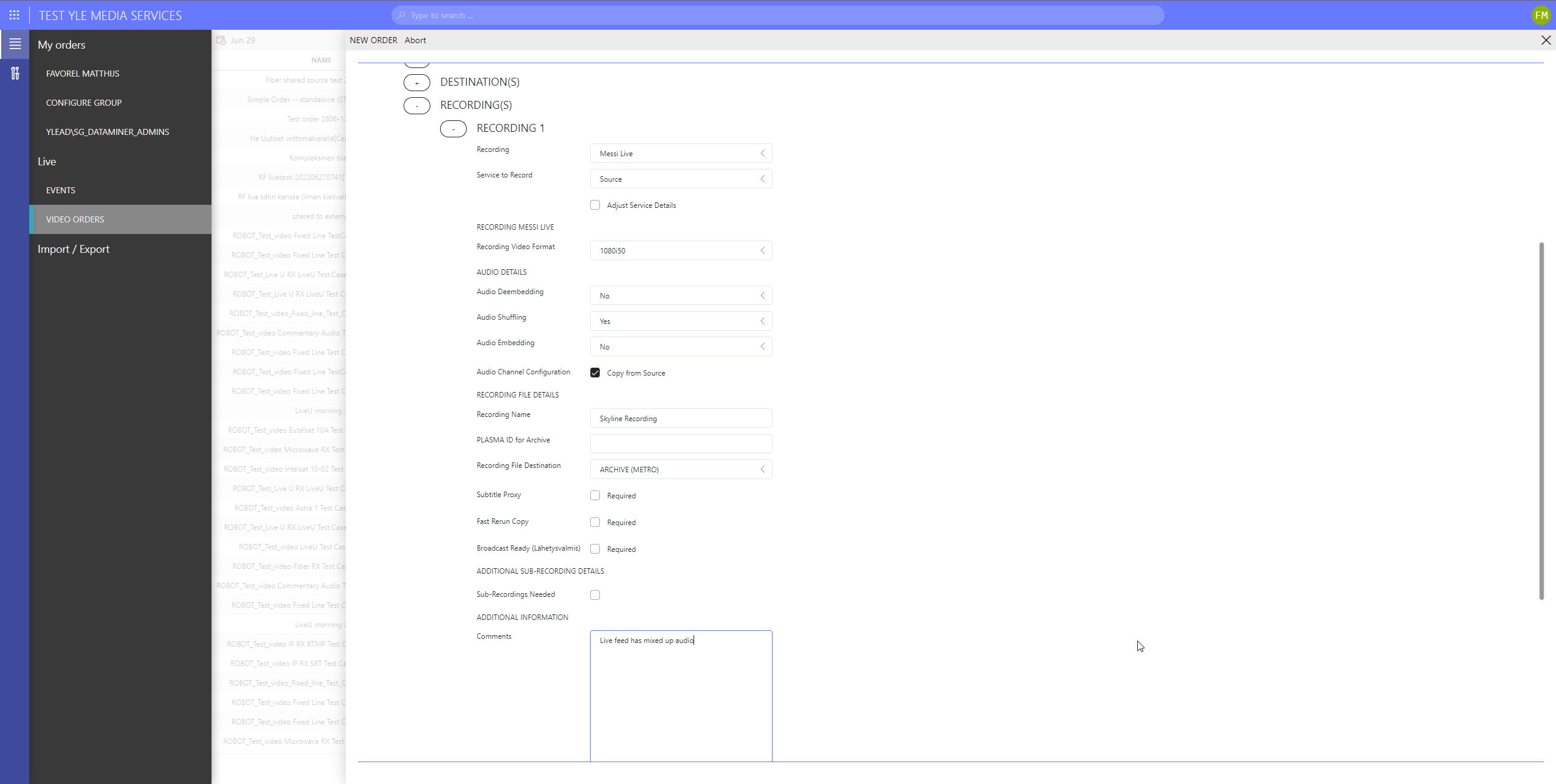 When you scroll further down, you can add one or multiple recordings for your feed and specify if additional signal processing is required. In this example, an audio shuffler needs to be looped in as the live feed does not match the audio pattern required in the MCR.
When you scroll further down, you can add one or multiple recordings for your feed and specify if additional signal processing is required. In this example, an audio shuffler needs to be looped in as the live feed does not match the audio pattern required in the MCR.
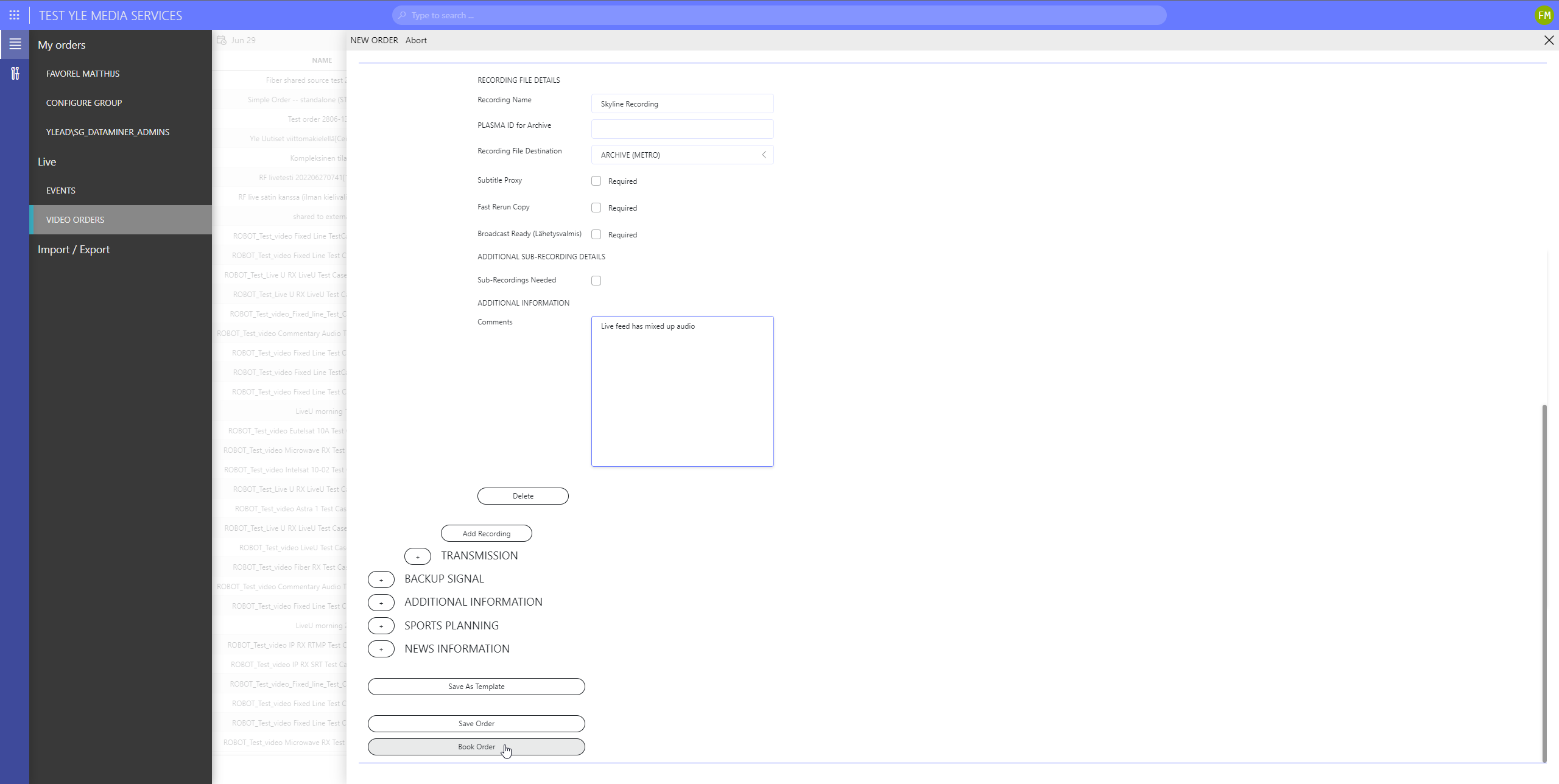 Once all administrative data has been entered, click the "Book Order" button, and DataMiner will start looking for available resources from its resource pool. This simple video order will need an audio shuffler and a single video server input for the recording.
Once all administrative data has been entered, click the "Book Order" button, and DataMiner will start looking for available resources from its resource pool. This simple video order will need an audio shuffler and a single video server input for the recording.
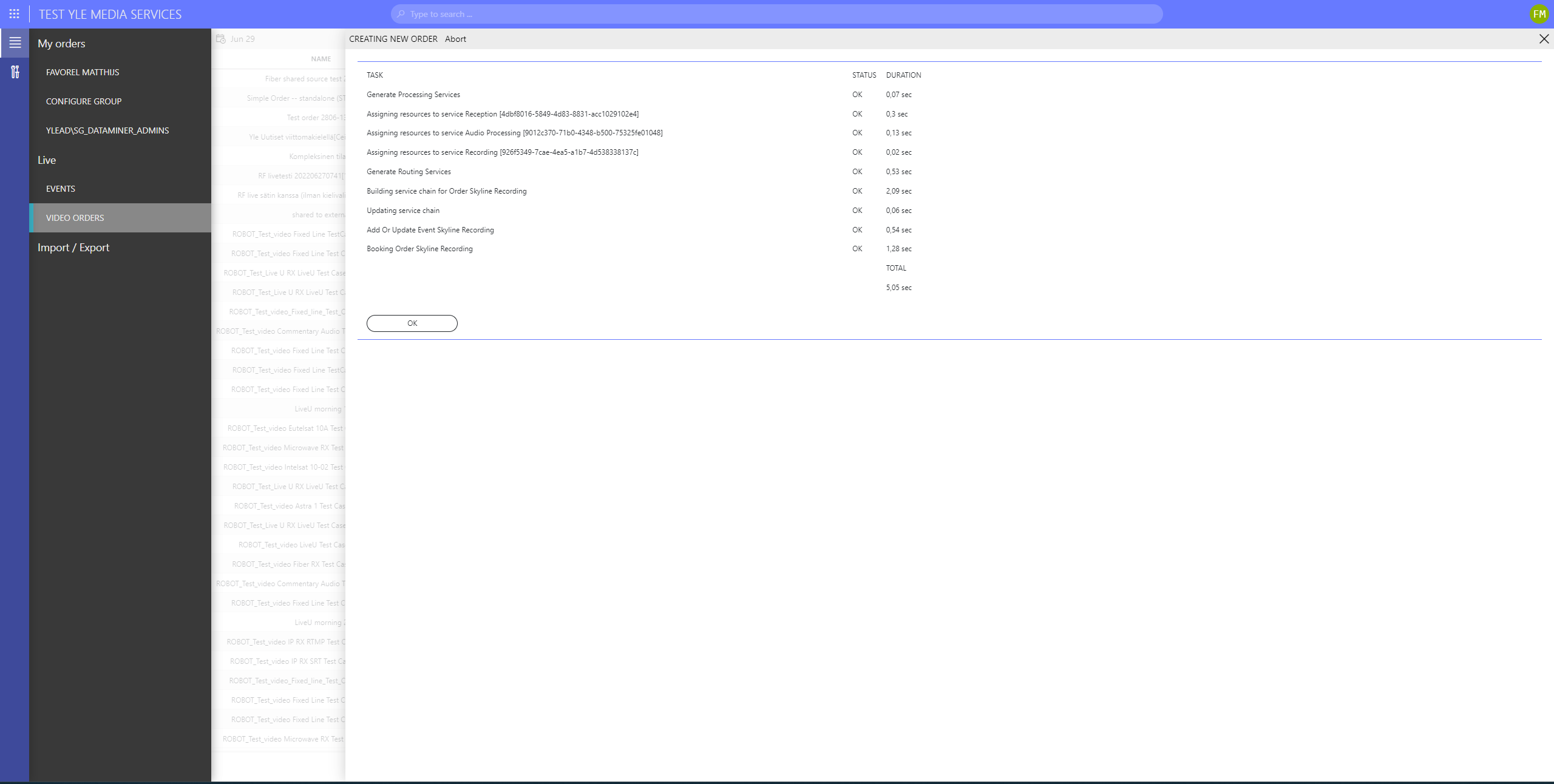 Operators get immediate feedback when resources have been found and these can be connected at the scheduled time. Thanks to the DataMiner Connectivity Framework (DCF), DataMiner knows the position and connectivity of each of the selected resources (shuffler and video server encoders) in the network. In SDI, tie lines could be required; in an ST-2110 IP environment, network capacity checks are made to prevent network oversubscription. In this example, everything went well and the "Skyline Recording" order is successfully booked. At this point, DataMiner will make sure that the recording can happen in a fully automated fashion.
Operators get immediate feedback when resources have been found and these can be connected at the scheduled time. Thanks to the DataMiner Connectivity Framework (DCF), DataMiner knows the position and connectivity of each of the selected resources (shuffler and video server encoders) in the network. In SDI, tie lines could be required; in an ST-2110 IP environment, network capacity checks are made to prevent network oversubscription. In this example, everything went well and the "Skyline Recording" order is successfully booked. At this point, DataMiner will make sure that the recording can happen in a fully automated fashion.
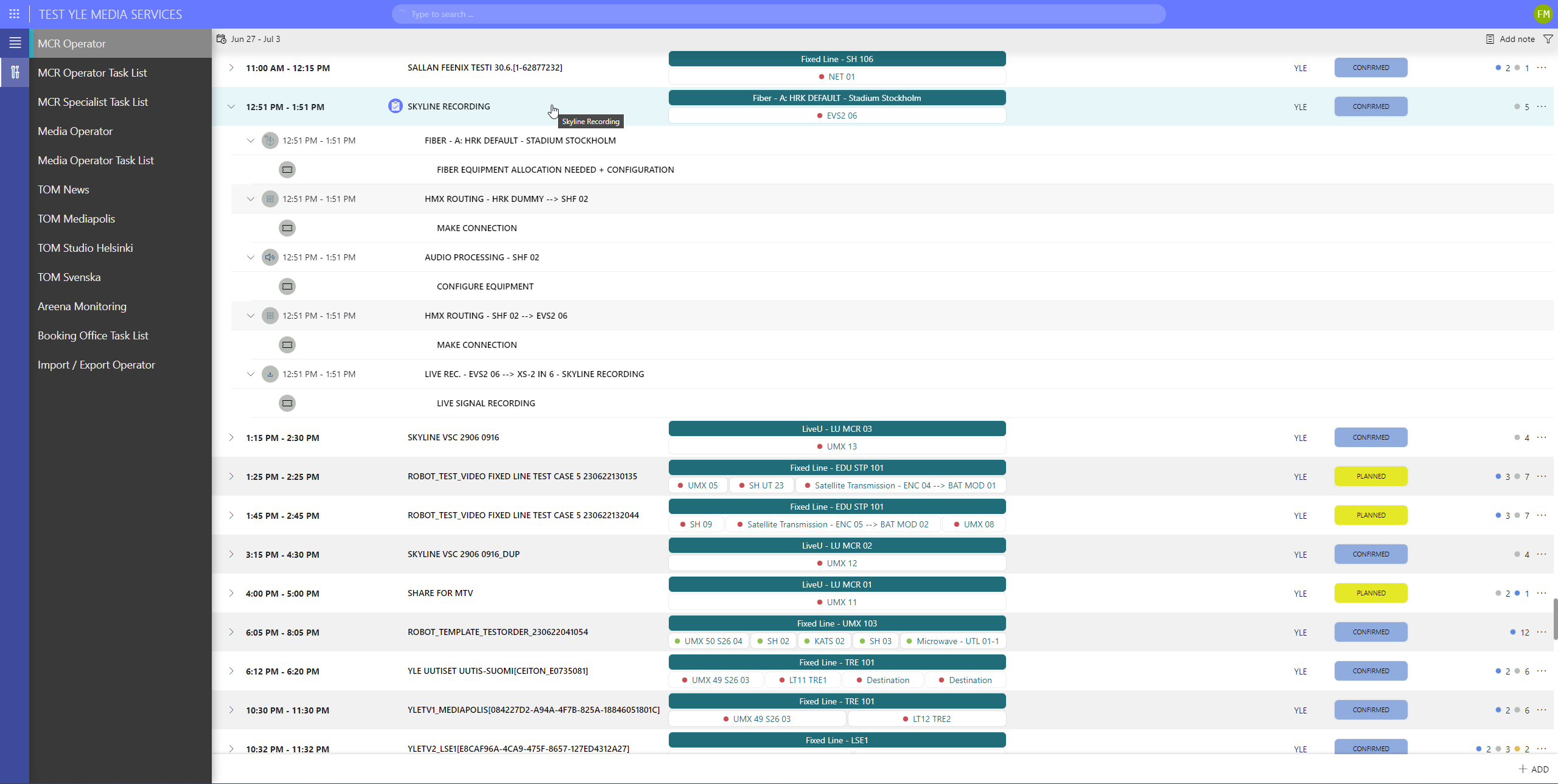 MCR operators have their own DataMiner user interface showing all the confirmed service orders. This screenshot shows the "Skyline Recording" order and all the steps that are required to record the signal on an EVS server.
MCR operators have their own DataMiner user interface showing all the confirmed service orders. This screenshot shows the "Skyline Recording" order and all the steps that are required to record the signal on an EVS server.
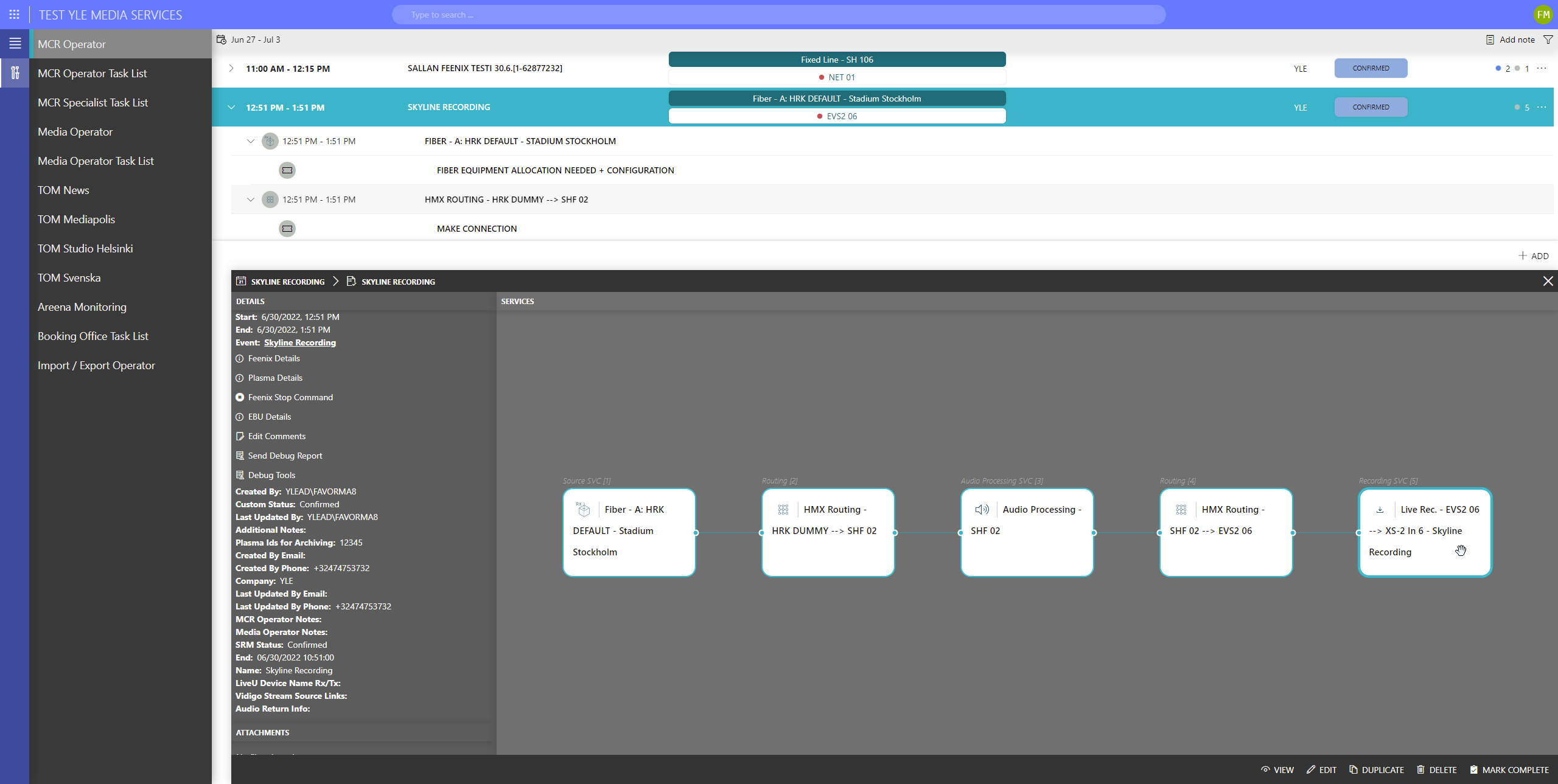 This is another view for the MCR operator, which shows all building blocks that belong to this media service. The block on the right represents the EVS video server.
This is another view for the MCR operator, which shows all building blocks that belong to this media service. The block on the right represents the EVS video server.
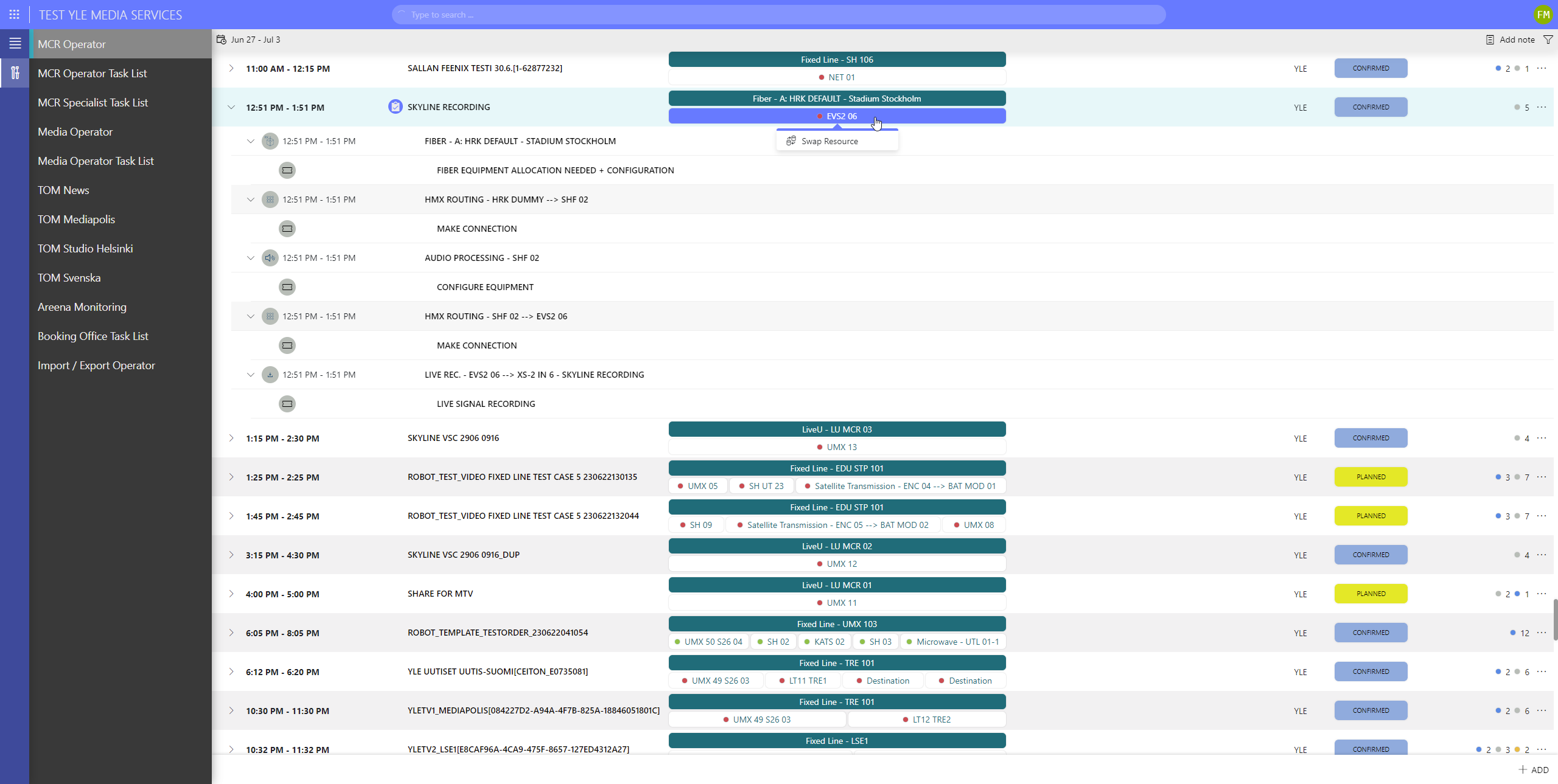 Although DataMiner automates the recording, operators can always intervene manually, in this example to swap the reserved ingest server port with a different one.
Although DataMiner automates the recording, operators can always intervene manually, in this example to swap the reserved ingest server port with a different one.
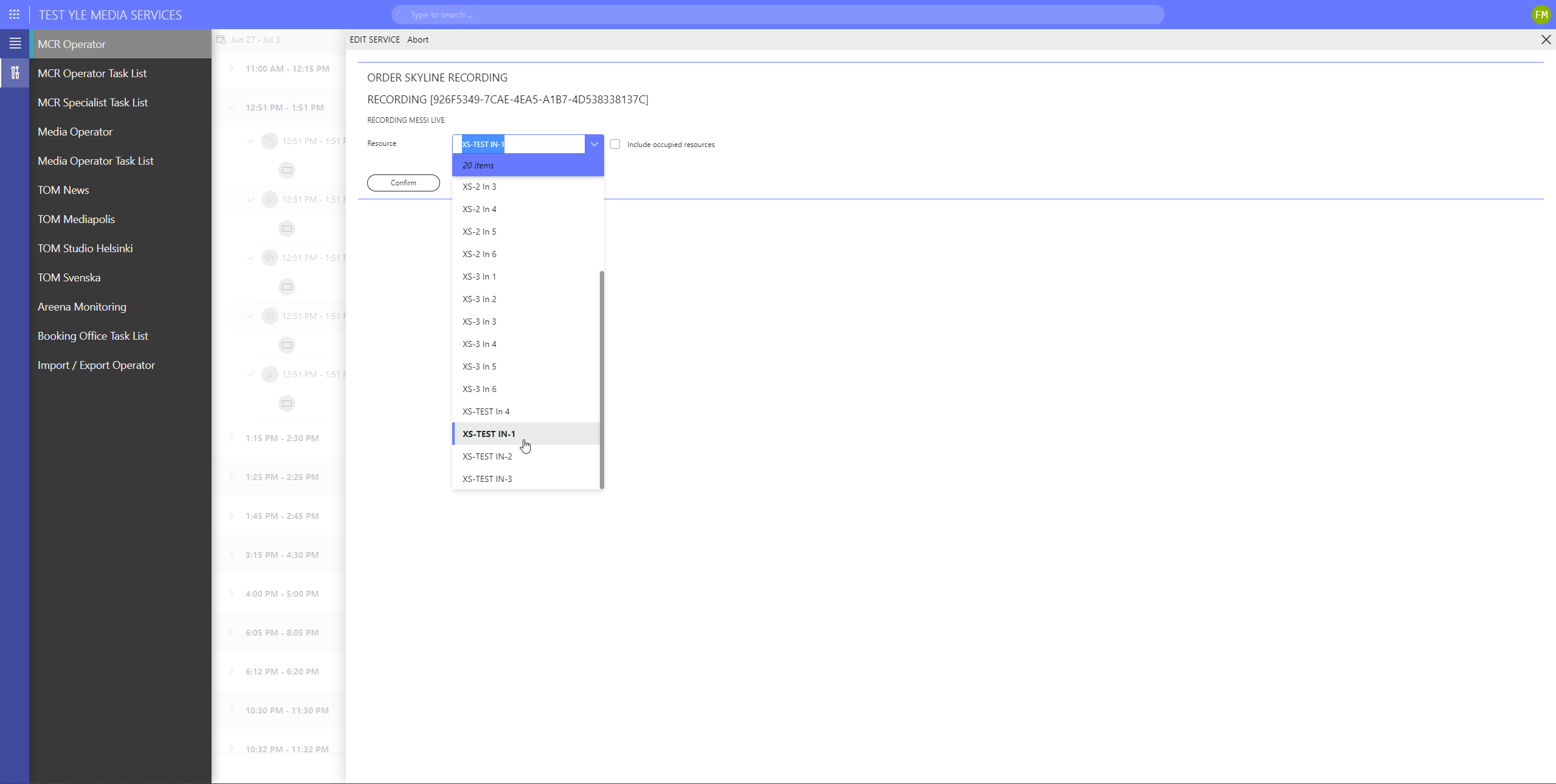 Then simply select a video server port from the managed pool. By default, you can only select the ports that are available, but you can select a checkbox to also get the ability to select a server port that was already reserved for another order.
Then simply select a video server port from the managed pool. By default, you can only select the ports that are available, but you can select a checkbox to also get the ability to select a server port that was already reserved for another order.
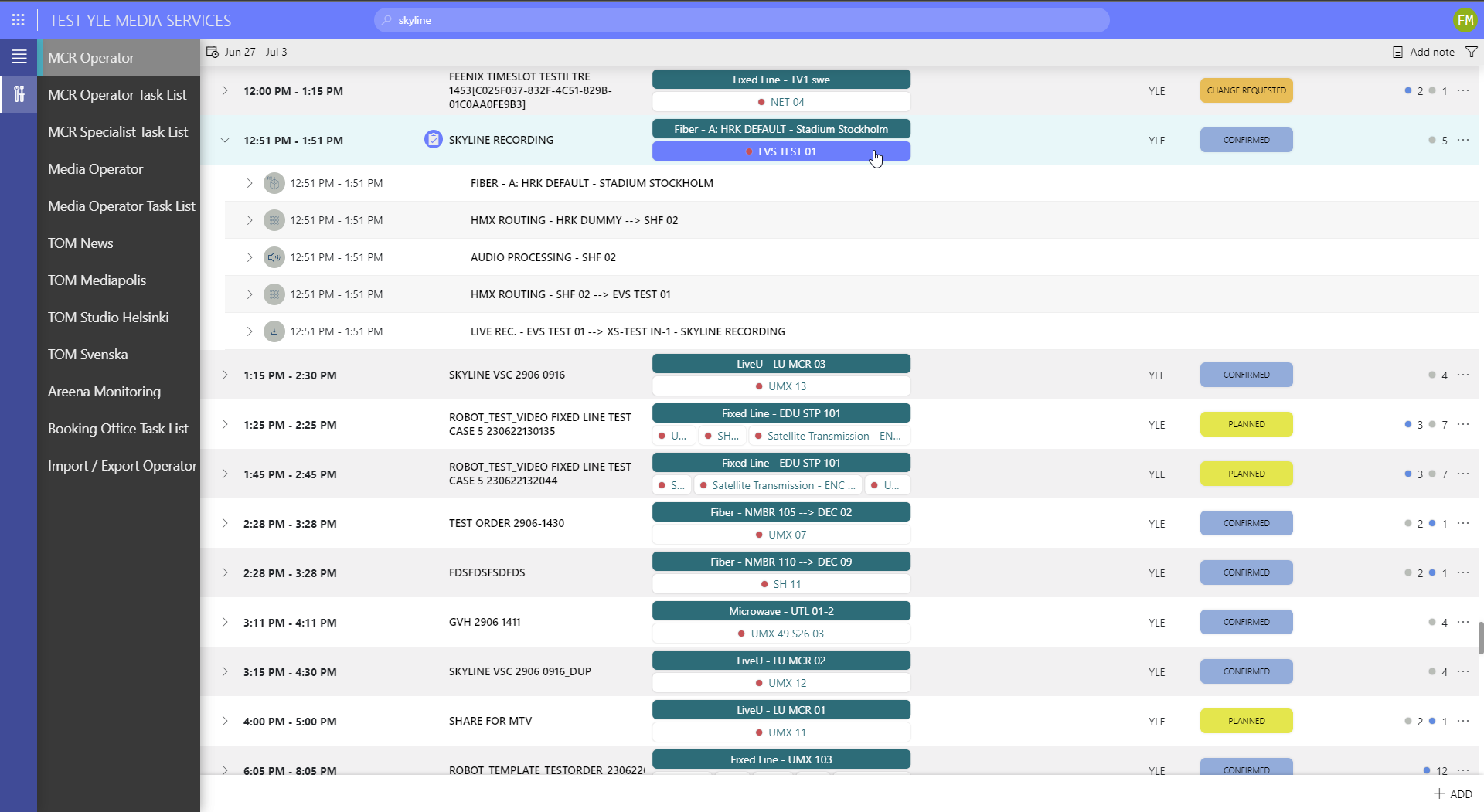 DataMiner releases the previously selected video server port and now shows the new server port that will be used for the recording.
DataMiner releases the previously selected video server port and now shows the new server port that will be used for the recording.
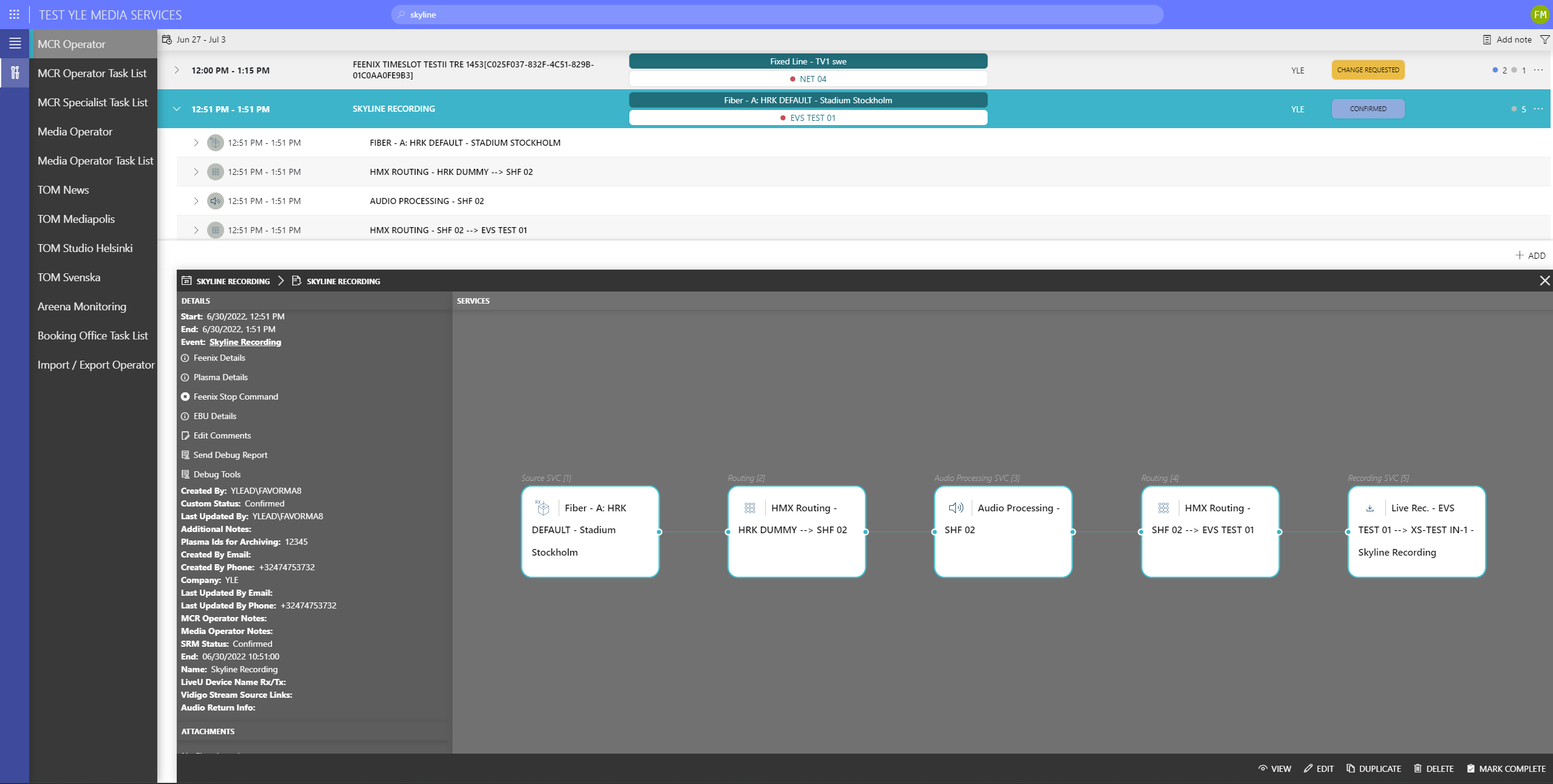 The signal routing has also automatically been changed, as you can see in the service diagram.
The signal routing has also automatically been changed, as you can see in the service diagram.
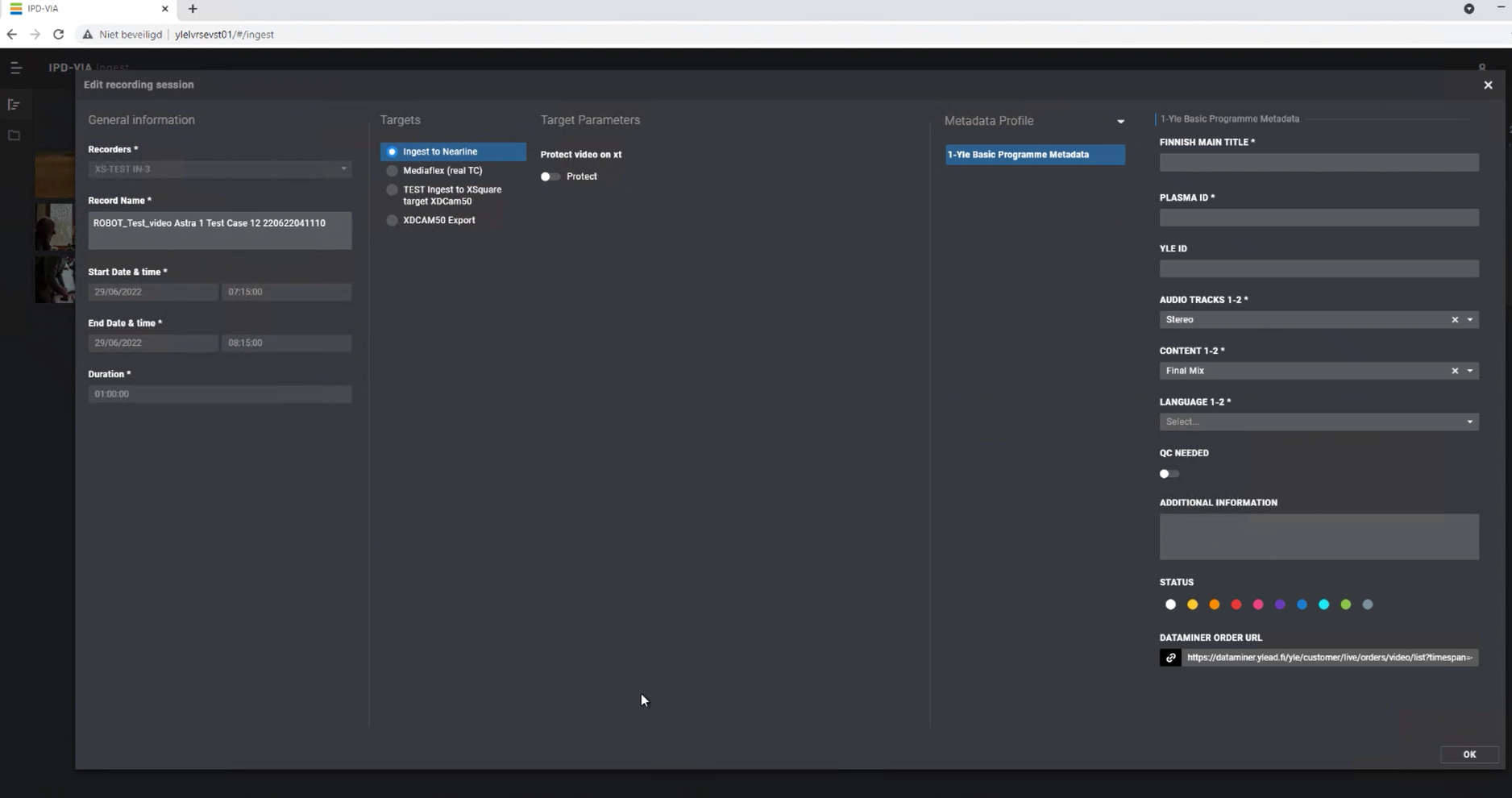 DataMiner interfaces with an EVS IPD-VIA system to trigger recordings. Through our DataMiner connector, the record name, start & stop time, and target for the recorded file are pushed to EVS. Operators can add additional metadata on the EVS user interface. DataMiner gets immediate access to that metadata through a RabbitMQ bus. With this, additional workflows to manage the recording can again be triggered automatically. Eager to get more details about the EVS connector? Take a look at the "EVS IPD VIA" use case here: https://community.dataminer.services/use-case/evs-ipd-via/
DataMiner interfaces with an EVS IPD-VIA system to trigger recordings. Through our DataMiner connector, the record name, start & stop time, and target for the recorded file are pushed to EVS. Operators can add additional metadata on the EVS user interface. DataMiner gets immediate access to that metadata through a RabbitMQ bus. With this, additional workflows to manage the recording can again be triggered automatically. Eager to get more details about the EVS connector? Take a look at the "EVS IPD VIA" use case here: https://community.dataminer.services/use-case/evs-ipd-via/